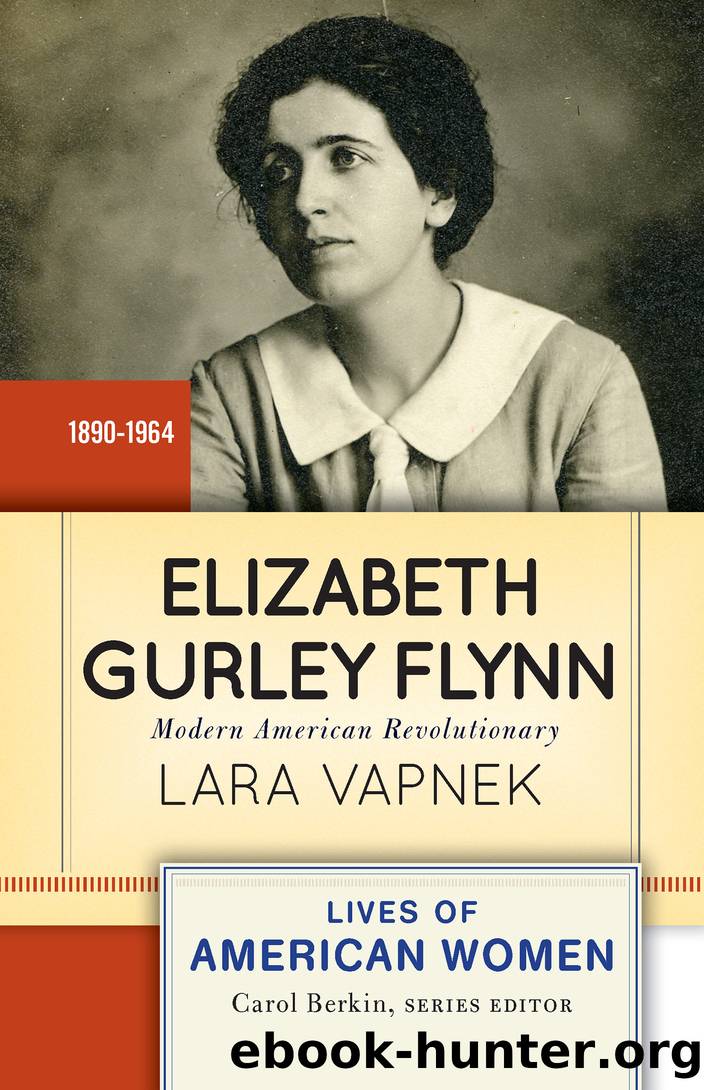Elizabeth Gurley Flynn by Lara Vapnek

Author:Lara Vapnek
Language: eng
Format: epub
Publisher: Westview Press
Published: 2014-12-09T00:00:00+00:00
Fred âBusterâ Flynn as an adult, in a photo taken by his Aunt Kathie.
NP18-67, EGF Photographs, Tamiment Library, NYU
Grief struck Flynn at a particularly difficult time politically: in August 1939, the Nazi-Soviet Non-Aggression Pact had ended the CPâs easy camaraderie with liberals and intellectuals.54 Many people who had sympathized with the Popular Front and supported the fight against fascism felt betrayed by the Soviet Union when it cut a deal with Germany to avoid invasion. When Flynn ran into an Italian friend from her days defending Sacco and Vanzetti, he greeted her with a âHeil Hitlerâ salute. American communists painted World War II, like World War I, as an imperialist conflict and called for peace. But their stance seemed hypocritical when the Soviet Union invaded Poland, Estonia, Latvia, Lithuania, and Finland in the fall of 1939.55 At a CP rally in Baltimore in December, war veterans, many of them Jewish, âhissed, booed, cat-called and shoutedâ at Flynn when she tried to defend Soviet actions.56 The American Legion disrupted meetings that Flynn held in Davenport and Des Moines, Iowa.57
The Nazi-Soviet Non-Aggression Pact sparked a mini Red Scare, but anticommunism had already intensified during the New Deal. Business and religious leaders viewed communism with hostility. The national leaders of the AFL continued their long animosity toward socialism and criticized their rivals in the CIO for their communist connections.58 President Rooseveltâs consolidation of executive power and his administrationâs sympathy for workers and African Americans antagonized both northern Republicans and southern Democrats, who sought to paint the New Deal as a communist plot. In May 1938, Representative Martin Dies, a Democrat from Texas, formed a Special Committee on Un-American Activities to investigate âsubversive activities.â59 The Dies Committee assumed a broad mandate to question suspects about communist ties and find them guilty by association. Anxious to avoid censure and disillusioned by the Nazi-Soviet Non-Aggression Pact, many liberal organizations that had been part of the Popular Front resolved to rid themselves of communists.60
Flynn became a victim of this new upsurge of anticommunism. In January 1940, the ACLU adopted a resolution declaring it âinappropriate for supporters of so-called totalitarian dictatorships to serve on the governing committees and staff of the union.â They expected Flynn, the sole member of the CP who remained on the board of the ACLU, to resign quietly. She refused. Instead, she wrote articles for the Sunday Worker and the New Masses defending herself. Flynn expressed disbelief that she would be asked to resign from the ACLU due to her membership in an organization: a practice the ACLU had âcontinuously protested againstâ since its founding twenty-three years earlier. Once composed of âhereticsâ and ânon-conformists,â she complained, the board of the ACLU now consisted of wealthy âlawyers, business men, [and] ministersâ and included ânot a single representative of organized labor.â Damning liberalsâ conceptions of themselves as neutral mediators between opposing interests, Flynn accused the board of having become âclass conscious.â The board was intimidated, Flynn argued, by a strong, powerful labor movement that made demands rather than asking for favors.
Download
This site does not store any files on its server. We only index and link to content provided by other sites. Please contact the content providers to delete copyright contents if any and email us, we'll remove relevant links or contents immediately.
Melania and Me by Stephanie Winston Wolkoff(1031)
The Class of 83 by Hussain Zaidi(965)
Live in Love by Lauren Akins & Mark Dagostino(948)
Dancing in the Mosque by Homeira Qaderi(920)
Orlando by Virginia Woolf; Mark Hussey(885)
A History of My Brief Body by Billy-Ray Belcourt(880)
Just as I Am by Cicely Tyson(724)
Stranger Care by Sarah Sentilles(722)
The Schoolgirl Strangler by Katherine Kovacic(720)
Robespierre: A Revolutionary Life by Peter McPhee(710)
Virginia Woolf by Between The Acts(710)
Unforgetting by Roberto Lovato(702)
Ariel (english and spanish Text) by Sylvia Plath(693)
1914 by Luciano Canfora(691)
Broken Horses by Brandi Carlile(690)
Paris Without Her: A Memoir by Gregory Curtis(687)
Harriet Tubman: The Biography by University Press(683)
One Life by Megan Rapinoe & Emma Brockes(678)
Berlin Diary: The Journal of a Foreign Correspondent 1934-41 by William L. Shirer & Gordon A. Craig(678)
